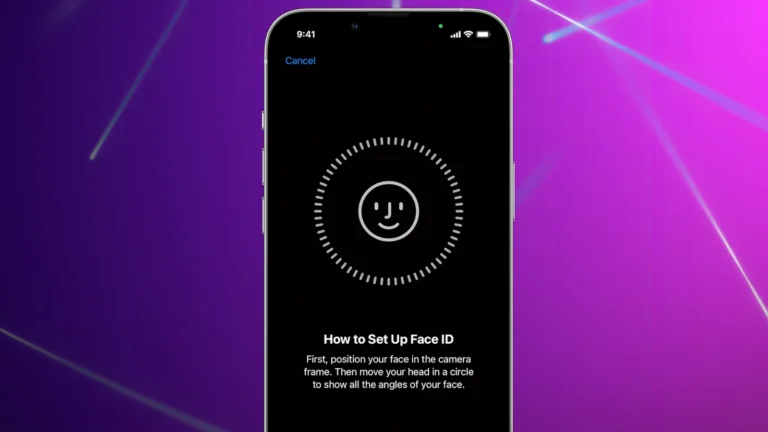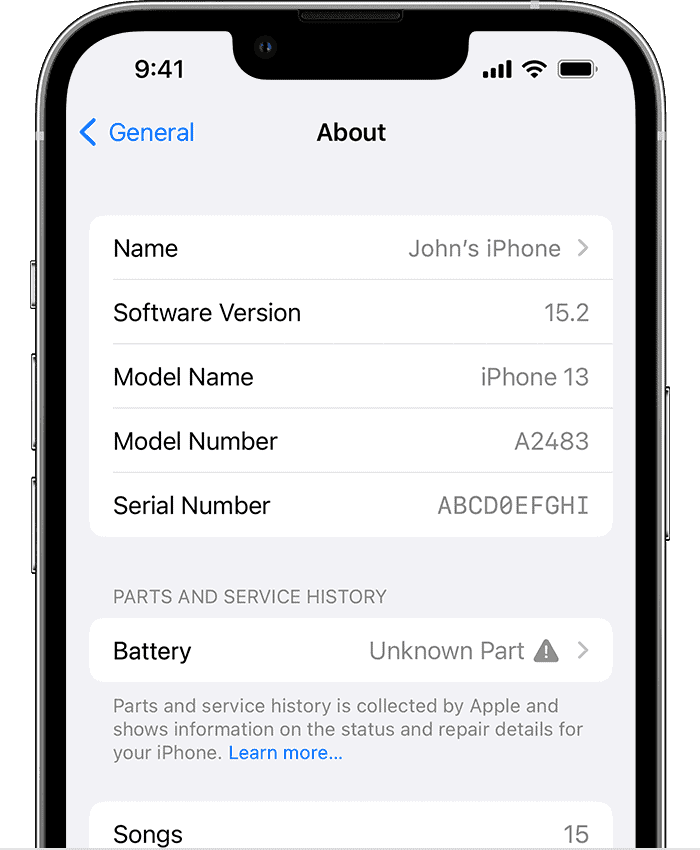Options To Repair Cracked Back Glass (iPhone)
| Option | Pros | Cons |
|---|---|---|
| Apple Repair | Professional job, warranty on repair, readily available parts | Most expensive option, may require sending phone away |
| Authorized Apple Service Provider | Similar quality to Apple repair, potentially lower cost, may require appointment | Still more expensive than other options |
| Third-party repair shop | Can be more affordable, faster turnaround time | Quality and warranty may vary, risk of using uncertified parts |
| DIY repair | Most affordable option but very difficult | Requires technical skill, high risk of damaging phone permanently, tools and replacement parts needed |

Back Glass Repair Methods For A DIYer
| Methods | Pros | Cons | Tips |
|---|---|---|---|
| Using a laser machine | – Potentially the cleanest and most precise repair method | – Requires expensive equipment and expertise, not readily available to most DIYers | – This method is typically used by professional repair shops. Attempting it yourself is highly discouraged unless you have the proper training and equipment. |
| Using heat and a pry tool | – More affordable than using a laser machine | – High risk of damaging the phone’s internal components, requires steady hands and good technique | – Only use this method if you are comfortable with delicate repairs and have watched multiple tutorials. Heat the back glass evenly to avoid shattering it further, and use specialized pry tools to avoid scratching the phone’s frame. |
| Swapping the back housing / glass assembly | – Replaces the entire back glass panel, resulting in a like-new appearance | – Requires careful disassembly of the phone and possibly some soldering skills, replacement parts can be expensive | – This is the easiest way to go about it if all things go right. Attempt this only if you’re comfortable taking apart your phone and putting it back together. |
| Covering the back glass with tape or a case | – Quick, easy, and affordable solution | – Doesn’t fix the crack underneath, might not look aesthetically pleasing | – This is a temporary solution at best. Consider using a screen protector designed for the back of the phone for added protection. |
| Using a custom skin or decal | – Adds a decorative touch while covering the crack | – Might not adhere well to the cracked surface, can be expensive for high-quality skins | – Choose a skin specifically designed for the iPhone and made from a durable material. Apply it carefully following the manufacturer’s instructions. |
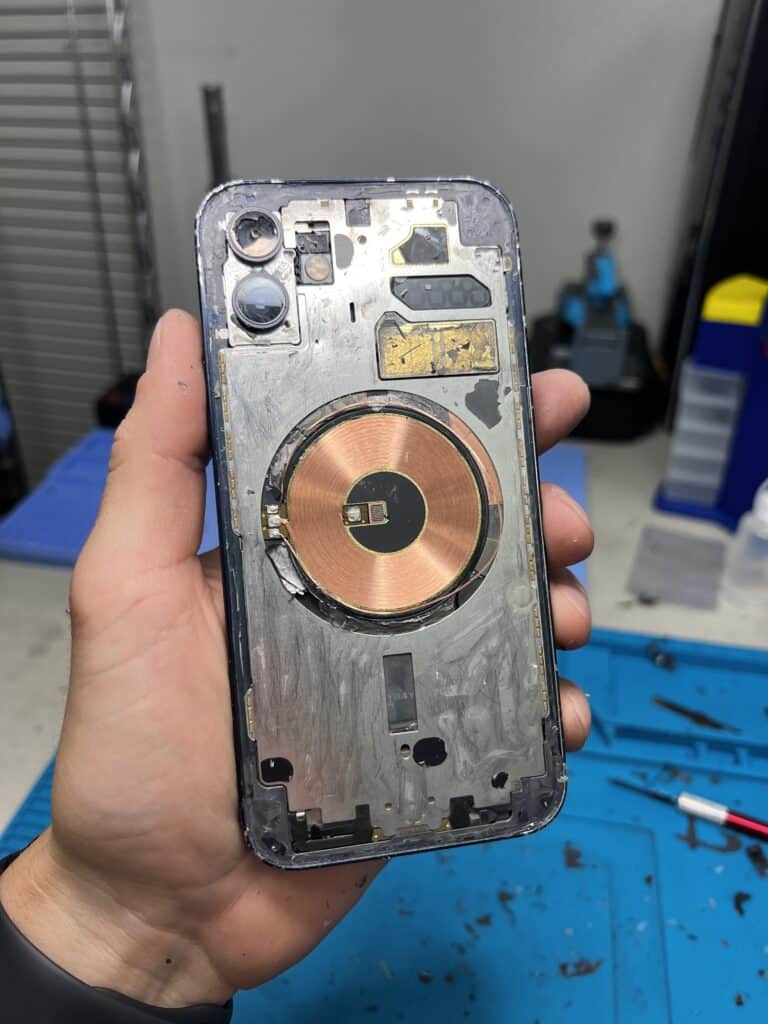
Important reminder:
DIY repairs carry a high risk of permanently damaging your phone. If you are not comfortable with any of these methods, it is always best to take your iPhone to a professional repair shop. They have the experience and tools necessary to fix the crack safely and effectively.
Key Takeaways
- Understanding the Fragility: The back glass of iPhones, especially from iPhone 8 onwards, is known for its fragility.
- Repair Options: Various methods exist for back glass repair, including using a laser machine or heat and pry tools.
- Cost Considerations: Apple has reduced the cost of back glass repairs for certain models with AppleCare+.
- Technical Challenges: The addition of MagSafe in iPhone 12 series has increased the complexity of repairs.
The Fragility of iPhone’s Back Glass
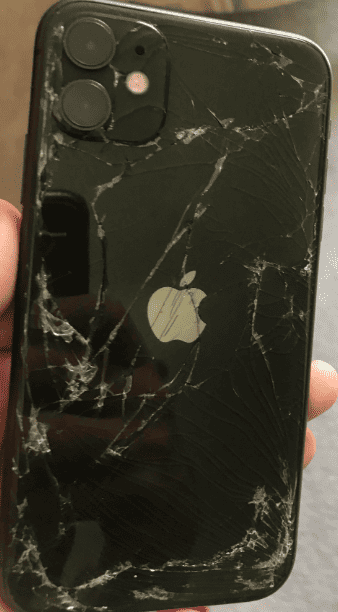
The back glass of iPhones, introduced to support wireless charging, has added both aesthetic appeal and fragility. This glass is prone to cracking, posing a challenge for users and repair technicians alike.
iPhones with Back Glass:
- iPhone 16 Series (2024)*
- iPhone 15 Series (2023)
- iPhone 14 Series (2022)
- iPhone 13 Series (2021)
- iPhone 12 Series (2020)
- iPhone 11 Series (2019)
- iPhone X / Xr / Xs (2017)
- iPhone 8 Series (2017)
*iPhone 16 expected to continue back glass usage as design changes will be minimal.
Methods of Repair
Method: Using Heat and Pry Tool

The Heat and Pry Tool method is a widely used technique for repairing the back glass of an iPhone. This approach involves applying heat to soften the adhesive that holds the back glass in place and then carefully prying the glass away from the frame. It’s a popular choice for its relative simplicity and cost-effectiveness.
Steps in the Heat and Pry Tool Method
- Preparation: Gather the necessary tools, including a heat gun or hairdryer, a set of pry tools (like plastic spudgers or thin metal blades), and protective gloves.
- Heating the Back Glass: Apply heat evenly across the surface of the back glass. The goal is to soften the adhesive without overheating any internal components. Move the heat source in a constant motion to avoid concentrating heat in one area.
- Finding an Entry Point: Once the adhesive is softened, identify a starting point for prying. This is usually along the edges where the glass meets the frame.
- Prying the Glass: Carefully insert the pry tool under the edge of the glass. Gently lift the glass away from the frame, working slowly around the perimeter. Patience is key to avoid cracking the glass further or damaging the frame.
- Removing the Glass: Continue to apply heat as needed while you work the pry tool around the entire edge of the glass. Once the adhesive is sufficiently loosened, the back glass should lift away.
- Cleaning the Frame: After removing the glass, clean any residual adhesive from the frame. This can be done using isopropyl alcohol and a soft cloth or a plastic scraper.
- Applying New Adhesive: Apply a new adhesive strip or liquid adhesive to the frame, ensuring even coverage for a secure fit.
- Attaching the New Glass: Carefully align the new back glass onto the frame and press down firmly to ensure a good bond. Wipe away any excess adhesive.
- Curing: Allow sufficient time for the adhesive to cure and set, ensuring the back glass is securely attached.
Advantages
- Cost-Effective: Requires minimal tools and no expensive equipment.
- Accessibility: Can be performed by individuals with basic repair skills.
- Immediate Results: Offers a quick solution to back glass damage
Method: Back Housing / Assembly Swap
A back housing/assembly swap is a recommended method for DIYers because if everything goes well you could be very successful with this method. This approach involves replacing the entire back assembly of the phone, including the glass, frame, and any attached components. It’s a viable alternative when the back glass damage is extensive or when other repair methods are impractical.
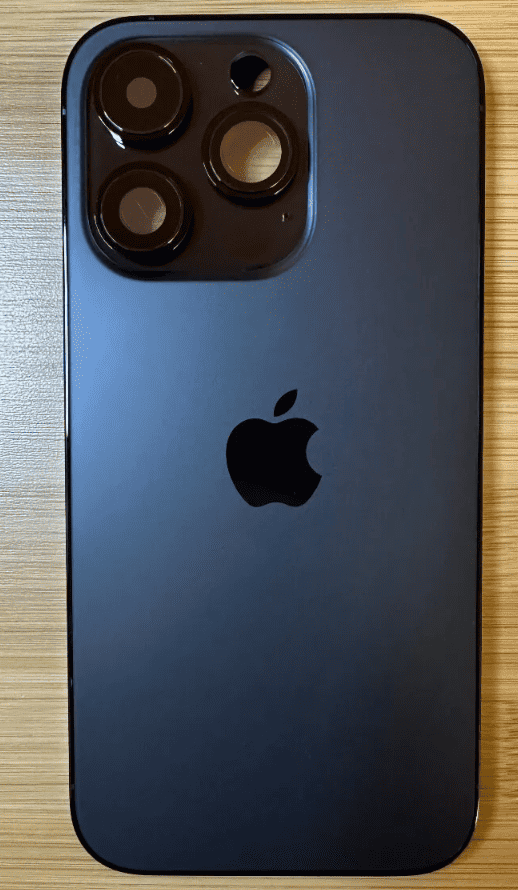
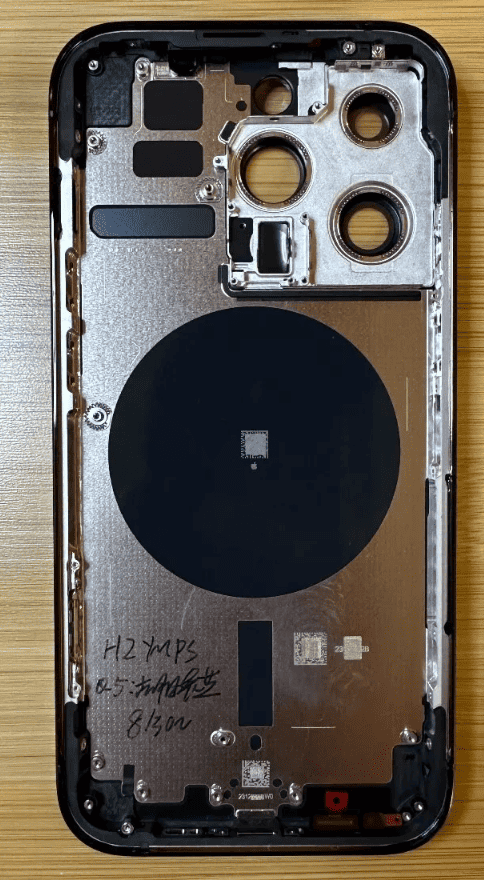
Process of Back Housing Swap
- Assessment: First, evaluate the extent of the damage to determine if an assembly swap is necessary. This method is often chosen for severe cracks or when multiple components are affected.
- Disassembling the iPhone: Carefully disassemble the iPhone. This step involves removing the screen, battery, motherboard, and other internal components to access the back assembly.
- Removing the Damaged Assembly: Once the internals are safely removed, detach the damaged back assembly. This includes the broken back glass and any attached elements like the wireless charging coil.
- Installing the New Assembly: Replace the damaged assembly with a new one. Ensure that the replacement part is compatible with the iPhone model and includes all necessary components.
- Reassembling the Phone: Carefully reassemble the phone, ensuring all components are securely in place and connected correctly.
- Testing: After reassembly, test the phone thoroughly. Check the camera, wireless charging, and other functionalities to ensure everything works as expected.
Advantages of Assembly Swap
- Comprehensive Solution: Replaces all potentially damaged components, not just the glass.
- Aesthetic Restoration: Restores the iPhone to a like-new appearance.
- Time-Efficient: Can be quicker than intricate glass-only repairs, especially for severe damage.
Method: Using a Laser Machine
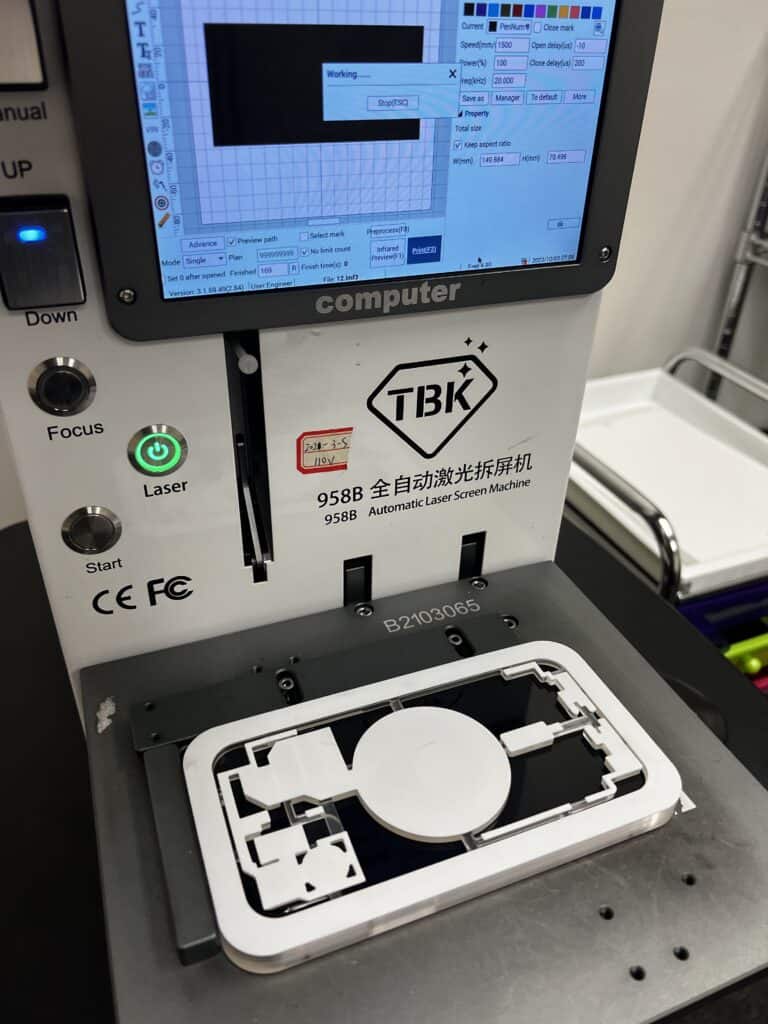
This method is mentioned but not entirely practical unless you have access to the machine. Laser machines are considered the most accurate way to strip a back glass and prepare the phone for replacement, but unless you’re trained on how to use one the results could be disastrous. We only recommend using a laser machine if you have used one before.
- Cost: Machine cost around $2,000.
- Process: Burns the glue bonding the glass without damaging other components.
Cost Considerations
Apple has reduced the repair cost for back glass on iPhone 12 and 13 models to $29, provided the user has AppleCare+. Without AppleCare+, the cost could go up to $599.
Challenges with Magsafe
The introduction of MagSafe in the iPhone 12 series (and later) increased the complexity of back glass repairs. The magnets glued to the glass require careful handling and specific techniques for successful repair.
Practical Scenarios
Imagine dropping your iPhone and finding a spider-web of cracks across its elegant back glass. This guide provides a lifeline, offering detailed steps and cost-effective methods to restore your iPhone’s pristine look.
Real-World Applications
Repair shops can leverage these methods to offer efficient and cost-effective services. iPhone users gain the knowledge to understand the repair process, helping them make informed decisions.
Latest Technological Advancements
The use of laser machines in back glass repair is a testament to technological advancement in the field of mobile repair. This high-precision method, though costly, offers a safe and efficient way to handle delicate repairs.
User Experiences
Many users have expressed relief at Apple’s reduced repair costs under AppleCare+. The complexity of repairs, especially for the iPhone 12 series, has also been a topic of discussion in various tech forums
FAQs on iPhone Back Glass Repair
Can I repair the back glass of my iPhone at home?
Yes, with the right tools and instructions, it’s possible to repair the back glass at home. However, it requires precision and patience. This is a repair that can easily damage other components on your
Is it cheaper to repair or replace an iPhone with a broken back glass?
This depends on the model and the extent of the damage. With Apple’s reduced repair costs under AppleCare+, repairing is often more cost-effective.
How long does it take to repair the back glass of an iPhone?
The time can vary depending on the method used, but typically it takes a few hours to complete the process.
Can I use third-party services for back glass repair?
Yes, third-party repair services can fix your iPhone’s back glass, but ensure they use genuine parts and have a good reputation.
Does repairing the back glass myself void the warranty?
Performing repairs yourself can void the warranty. It’s recommended to check with Apple or authorized service providers before proceeding.
What back glass repair method do you recommend for a first-timer?
It’s so easy to make a mistake when removing the old back glass and putting on the new one that we recommend going with the assembly swap method. The biggest mistake people make with the other methods is related to the heat application burning the logic board – with an assembly swap you minimize that risk.





